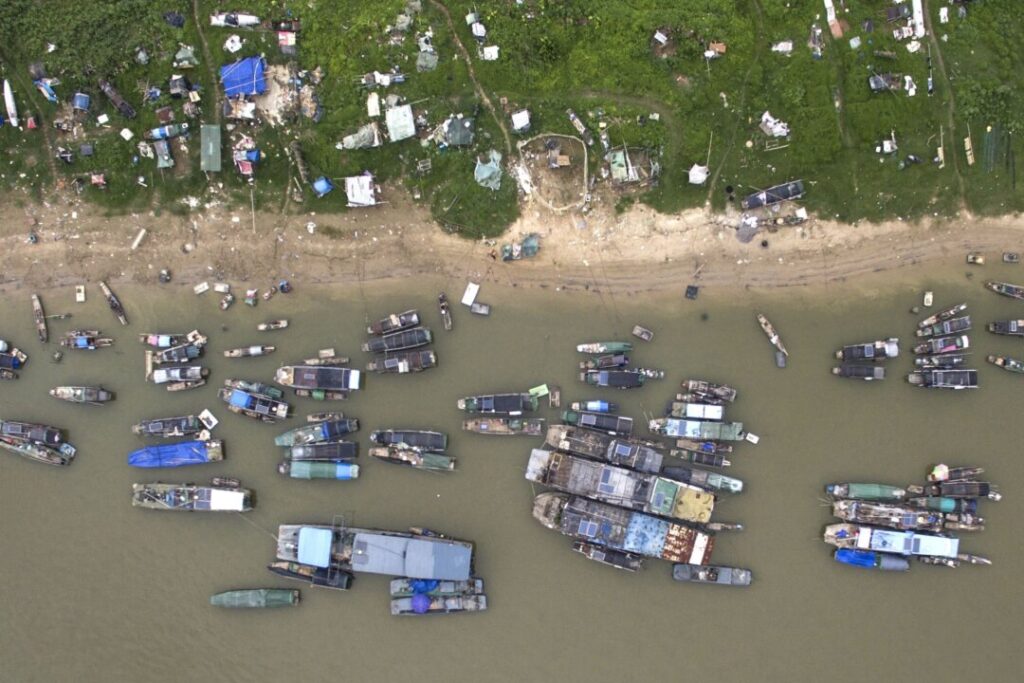Protesters said forced displacement of fishing boats to nearby villages would threaten their livelihoods.
Riot police last week blocked the road and protested a state order to relocate boats from long-standing typhoon shelters, clashing with residents of a fishing village in southern China who blocked the road for fear that the move would threaten their livelihoods.
The protest began on the afternoon of May 6th in Gangao village in Shantu city, Guangdong province. This is because about 2,000 villagers gathered along the main road near the port. Villagers said they opposed the forced relocation of fishing boats to temporary shelters in nearby villages.
The standoff continued early on May 7, when more than 100 riot police were deployed to forcefully disperse the crowd, causing physical conflict, injuries and multiple arrests.
Chen Minjian, a local resident who gave the pseudonym for fear of government retaliation, told the Chinese version of the Epoch Times that the village has two typhoon shelters. The old ones have been reliably protecting the ship’s 600+ fishing boats for years, and withstanding typhoons above Category 10 without damaging the vessels. This is a record of winning the trust of local fishermen.
In contrast, Chen said the new shelter, which was built in 2019, was not built according to approved plans. He said it lacks sufficient wind protection and contains hidden coral reefs, poses a serious safety risk and cannot accommodate all village boats. As a result, residents have long resisted relocating the ship from their original shelter.
In 2024, the Guang’ao Village Committee personally sold the old shelter without general approval, the villagers said. After sale, the orders were filled with strong resistance when authorities tried to force local fishermen to move their boats.
Chen said residents raised safety concerns about the new shelter with local officials last October, but their complaints were ignored. On May 6, the community was shocked when massive police were deployed to carry out boat relocation, sparking protests from villagers.
Beyond their immediate concerns about the fishing boat, Chen revealed the village’s deeper dissatisfaction. Over the past decade, all the land in villages under local government control has been sold, but ordinary residents have been protected in the darkness of where the deals and revenues are. Villagers said years of frustration have exploded into mass protests as dividend payments have been lost to the community for decades.
Following last week’s crackdown, a small group of villagers, including Chen, met with village officials and district-level Communist Party chiefs of the Chinese Communist Party, demanding a resolution of the issue of typhoon shelters and transparency into past land sales. The party leaders have pledged to address their concerns, but according to Chen, no concrete plans were provided.
With nearly 300 years of history, Guang’ao village is home to over 14,000 residents and is heavily dependent on marine fishing. Approximately 2,000 villagers are engaged in offshore businesses, supporting networks of related industries such as seafood processing, sales, logistics and equipment maintenance. Fisheries account for more than 65% of the village’s total economic output.
In rural China, other local officials have been accused of selling collective land for personal gain without adequate compensation to villagers.
A famous example occurred in the Wukan region in Guangdong Province in 2011. There, villagers who allegedly sold more than 990 acres of village land, staged a few months of protest. The proceeds, which are allegedly over $110 million, were believed to have been embezzled by corrupt local governments.



